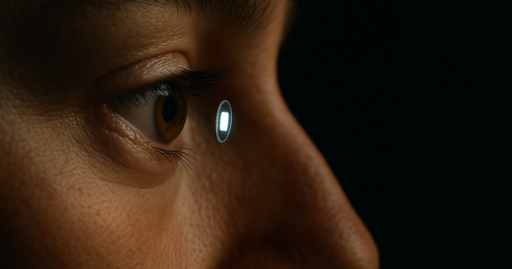While most video screens such as those on our phones, TVs, and stadium jumbotrons seem to improve in resolution on a monthly basis, there has been an issue in improving the resolution of the tiny screens required in virtual reality apps. The problem is that as the screen moves closer to the human eye, the pixels that comprise it need to get smaller and smaller. Yet, if pixels get too small, their function starts to degrade and the image suffers. On a micro-LED screen, for example, pixels can’t get much smaller than one micrometer wide before losing their ability to render a clear, crisp image.
So instead of relying on pixels, researchers from Chalmers University of Technology, the University of Gothenburg and Uppsala University in Sweden turned to a different technique. They created what they’ve termed “metapixels” out of tungsten oxide, a material that can switch from being an insulator to a metal based on its electrical state. The metapixels reflect light differently based on their size and how they’re arranged, and can be manipulated by an electrical current. In a way, they function much like the pigments in bird’s feathers, which can take on different colors based on how the light is hitting them.
The fact that metapixels don’t need a light source eliminates the problems that video pixels take on when they get too small such as color bleeding and issues with uniformity.
!remindme 30 years
It’s cool tech, but if it could actually replace displays, get ready for the patents to be bought up and buried so we can keep selling glowing rectangles with tons of e-waste, as god intended.
this just sounds like worse light field displays
Man I do love me some crazy promises tech bros make. Talk to me when it’s a reality. Even then, meh. I like not having a screen in my eyeball.
The only thing I would use such a thing for is installing an ad blocker for the real world.
Honestly, I’d prefer an eyeball screen without GPS over the level of phone surveillance we currently have. But of course those will come with GPS implants, as we can’t go back to privacy.
Cool. Black mirror tech is coming along nicely.
To demonstrate the efficacy of the tiny screen, the researchers reproduced The Kiss, a famous artwork painted by Gustav Klimt. The image was shown in perfect resolution on the screen, which at approximately 1.4 x 1.9 mm was 1/4000th that of a standard smartphone.
This makes me doubt the author of the article’s credibility. What exactly is the “perfect resolution” of a hand painted piece of art?
The underlying paper is published in Nature which adds more credibility to its significance but an article that presents none of the limitations, drawbacks, or broader industry context that might hold something like this back isn’t adding much. What was the colour depth? Refresh rate? Is it thrown if the external light shifts and changes? How many children have to be sacrificed to the machine gods to produce it? Etc. etc.
This means that each pixel roughly corresponds to a single photoreceptor in the eye, i.e. the nerve cells in the retina that convert light into biological signals," adds Andreas Dahlin, Professor at the Department of Chemistry and Chemical Engineering at Chalmers. “Humans cannot perceive a higher resolution than this.”
This is the paragraph literally right above the one you quoted. Do you understand what they mean by “perfect” now? They are saying you literally could not precive a differece in resolution from the image and real life.
While I get your point, this is an article, not a whitepaper. The scope you’re requesting is unreasonable for “cool new thing appeared in Nature” for laypeople.
While I get your point, this is an article, not a whitepaper.
If someone says something that is obviously not a thing, like ‘the perfect resolution of an analog painting’, then it means the author probably didn’t actually understand what they read and so you shouldn’t trust their interpretation of the underlying news.
This makes me doubt the author of the article’s credibility. What exactly is the “perfect resolution” of a hand painted piece of art?
High-enough that you can’t distinguish individual pixels with your eye. At least, that’s how Apple defines their retina displays; not sure if these guys are following the same standard for that terminology or not.
That’s not a resolution, that’s a pixel density at a set distance. It’s also arbitrary on Apple’s end, not actually a meaningful universal measurement.






